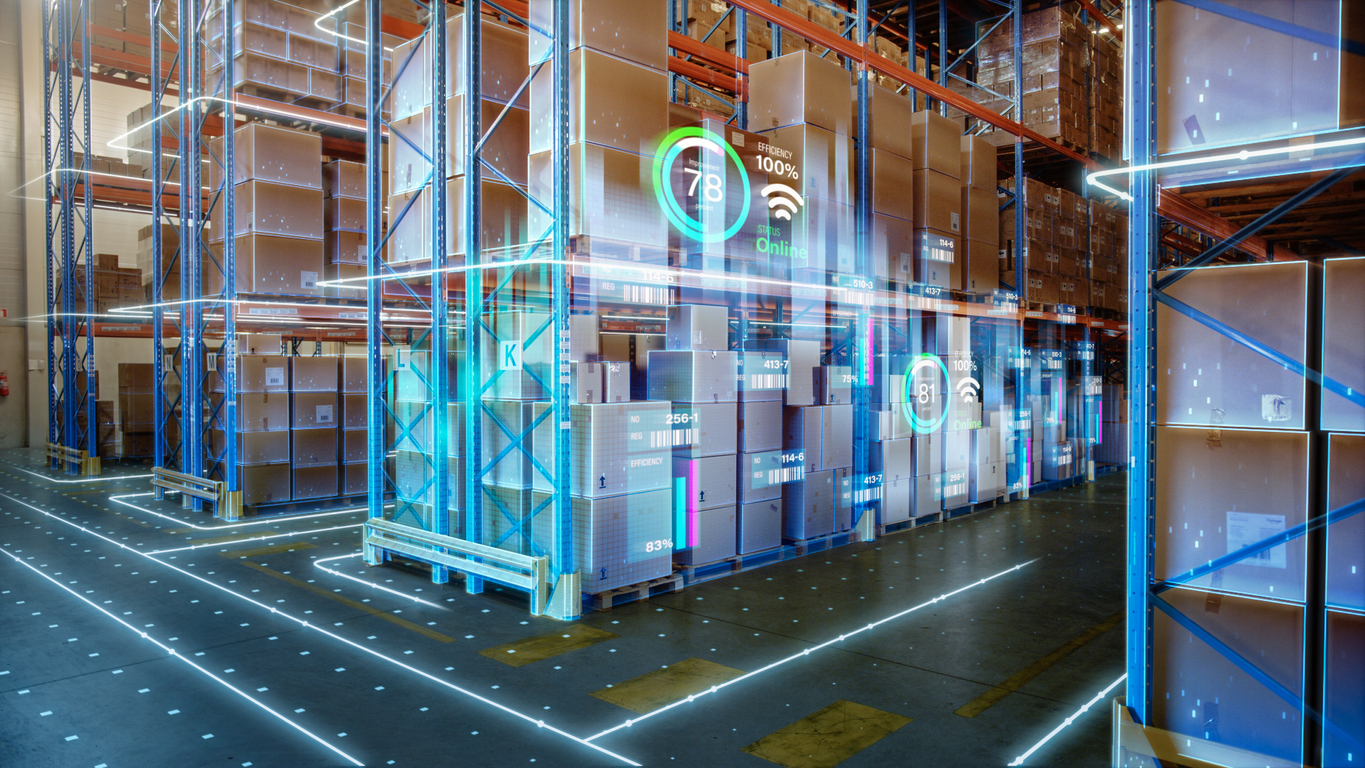Det har gått snart fem år sedan Gunnar Hagman tog över posten som VD för Skanska Sverige, när han i slutet av 2016 efterträdde Pierre Olofsson. Som ansvarig för ett av Sveriges största byggföretag ser han inte bara till att man bygger säkert – utan strävar även efter att få med hållbarhetsaspekten i alla delar av verksamheten. Digitaliseringen underlättar det arbetet. Men det finns även utmaningar på den fronten – inte minst när det kommer till lagstiftningen menar han.
Hur kommer byggnads- och konstruktionslandskapet att se ut efter pandemin tror du?
Det är en spännande fråga. Något som har stuckit ut är att bostadsmarknaden varit överraskande stark ända sedan förra sommaren. Det är kanske först nu som vi ser att det planar ut något. Troligtvis börjar fler och fler personer att lägga pengar på andra saker än sitt boende. Man kanske vill återvända till jobbet och spenderar inte lika mycket tid hemma. Därför svalnar bostadsmarknaden av litegrann och blir lite mer “normal” nu när pandemin klingar av.
Sedan har många kommuner och regioner haft ansträngda finanser och fått statligt stöd. Inte bara i Sverige utan även i andra länder. Även detta måste trappas ner och då finns en risk att det kan bli en tuffare marknad. Men – alla prognoser pekar på att det blir en ganska stark ekonomi generellt i samhället och även för vår bransch. Så jag skulle säga att det ser ganska positivt ut.
Efterfrågan på smarta byggnader ökar som svar på behovet av mer hållbara bostadsutrymmen. Vilka smarta byggtrender kan vi förvänta oss 2022?
Om vi tar bostäder som exempel tror jag att fler och fler insett att man kommer att spendera mer tid hemma och jobba hemifrån i större omfattning än man har gjort tidigare. Det gör att kravet på att hitta en avskild arbetsplats i sin bostad kommer vara något man värderar högt. Givetvis ställer det krav på bra teknik likt fiberuppkoppling som man har i de flesta projekt idag.
Tittar man sen på kontorsbyggnader tror vi på Skanska att dessa också kommer spela en viktig roll framgent, men det kommer att vara utmanande som företag att skapa samma “sköna känsla” som det är att vara hemma. Arbetsplatsen kommer att behöva vara mer som en magnet. Trevlig, energigivande, och kreativ. Mer av en mötesplats än bara ett skrivbord att sitta vid. Det är inte minst viktigt för att kunna attrahera de smartaste och bästa medarbetarna.
Sen är det klart att hela digitaliseringsprocessen är i en form av brytpunkt nu, något som startade innan pandemin. Det har varit mycket förberedelser för smarta byggnader och göra de mer integrerade med datorverktyg. Det tror vi kommer att ta fart nu på allvar. Tekniken är så pass billig och datakraften så pass stor. Det finns även exempel på techjättar som investerar stora pengar i byggsektorn.
Vilka är de viktigaste utmaningarna för bygg- och fastighetssektorn när det gäller just hållbarhet. Vad är förhållandet mellan digitalisering och hållbarhet?
Man får se lite på kort och lång sikt när det gäller hållbarhet. Vi har satt som mål som många företag att gå ner till noll klimatpåverkan till 2045 och en halvering till 2030. Den planen bygger bland annat på att vi måste minska CO2-påverkan av stål, cement och fossila bränslen. Just cement har blivit en aktuell fråga i Sverige under sommaren som många noterat med Cementas tillstånd som nekades i Mark- och miljööverdomstolen. Det tycker jag var mycket tråkigt eftersom jag vet att Cementa fortfarande har höga ambitioner när det kommer till koldioxidneutral tillverkning av cement på Gotland.
Cement står kanske för en tredjedel av alla utsläpp i Sverige i byggbranschen som helhet. Om vi tvingas köpa den från länder likt Kina, Turkiet eller Algeriet som verkar vara enda alternativet, ja då kommer utsläppen att vara större än de är idag. På kort sikt är jag lite bekymrad måste jag säga. Det är ganska tydligt att vår miljölagstiftning troligtvis behöver ses över och reformeras. Vi behöver göra en väldigt dramatisk omställning till grön produktion av stål, elektrifiera mer och bryta exempelvis kobolt som kan användas i batterifabriker. Alla inser efter FN:s senaste klimatrapport att tiden är knapp.
Just när det gäller klimatet skulle jag säga att digitalisering är en förutsättning för att kunna uppnå en väldigt låg klimatpåverkan. Det är helt avgörande med ny teknik om vi ska kunna göra medvetna och kvalificerade val av material och produktionsmetoder. Inte minst för att få beslutsverktyg som gör att vi kan fatta vettiga beslut och därmed en låg klimatpåverkan.
Skanska banar väg för hållbara lösningar inom byggbranschen. Är företaget på väg att nå sina hållbarhetsmål om koldioxidneutralitet innan 2045?
Jag tycker att när det kommer till de delar som vi kan påverka själva ser vi en väldigt bra utveckling. Då tänker jag på sådana saker som att om vi har möjlighet att välja fossilfritt bränsle, ja då gör vi det. Den utvecklingen går ganska snabbt och vi har fler och fler kunder som kräver detta också. När det kommer till stål respektive cement är vi beroende av materialleverantörerna. I Sverige har vi två stora företag som vill tillverka koldioxidneutralt stål. Både HYBRIT som är ett samarbete mellan LKAB, SSAB och Vattenfall och H2 Green Steel som är ett fristående privat företag. Jag tycker det är jättespännande. Till 2045 är min förhoppning att vi kan ha fossilfritt stål till byggindustrin och att vi även kan återvinna material i en mycket större omfattning likt beton.
Cirkulärt byggande är en superviktig del och jag tycker det går framåt. Vi har våra första helt klimatneutrala bostäder som vi har sålt i år och vi har startat ett nytt kontorsprojekt i Malmö i Hyllie som också är helt koldioxidneutralt räknat enligt vår livscykelanalys som bland annat bygger på att att tillverka solenergi i det här fallet i de här projekten som neutraliserar de utsläppen man har åstadkommit under själva byggprocessen. Vi försöker även jobba med att minimera vår påverkan ytterligare så klart genom smarta materialval och partnerskap med en del leverantörer av material. Och givetvis vill vi ha fler kunder som ställer tuffa krav på oss och som gärna vill utveckla klimatneutrala byggnader tillsammans med Skanska. Vi gör inte det här helt själva – det är en insikt som vi har.
Det låter verkligen som att det går framåt och att framtiden ser positiv ut.
Man måste vara positiv tycker jag. Man får inte blunda för att det finns utmaningar längs vägen som är ganska stora. Men redan idag finns de tekniska lösningar som krävs. Sen är frågan mer om vi kommer att hinna ställa om i den hastighet som krävs. Jag är själv personligen bekymrad och många med mig så klart. Det känns som att klimatförändringarna går fortare än vad forskare och experter har trott i sina scenarier och det känns bekymmersamt.



